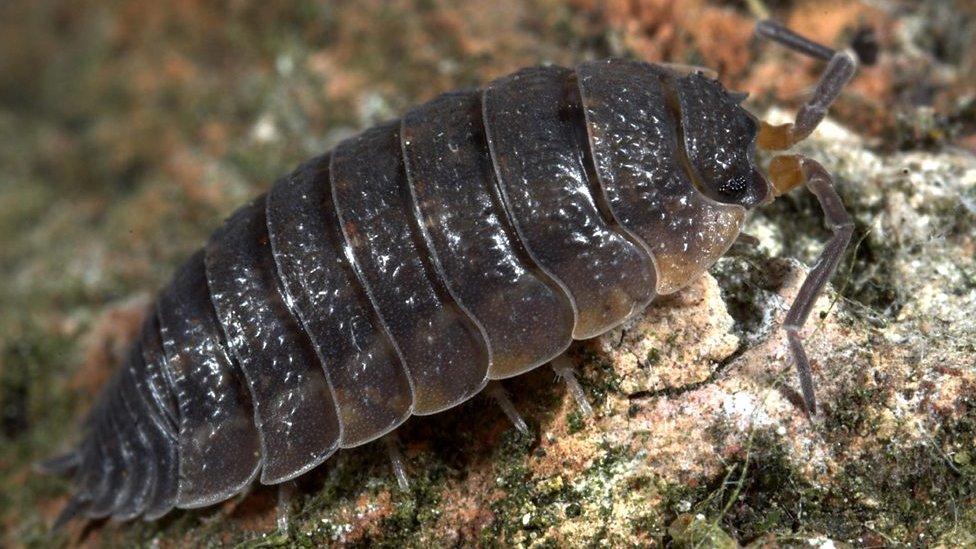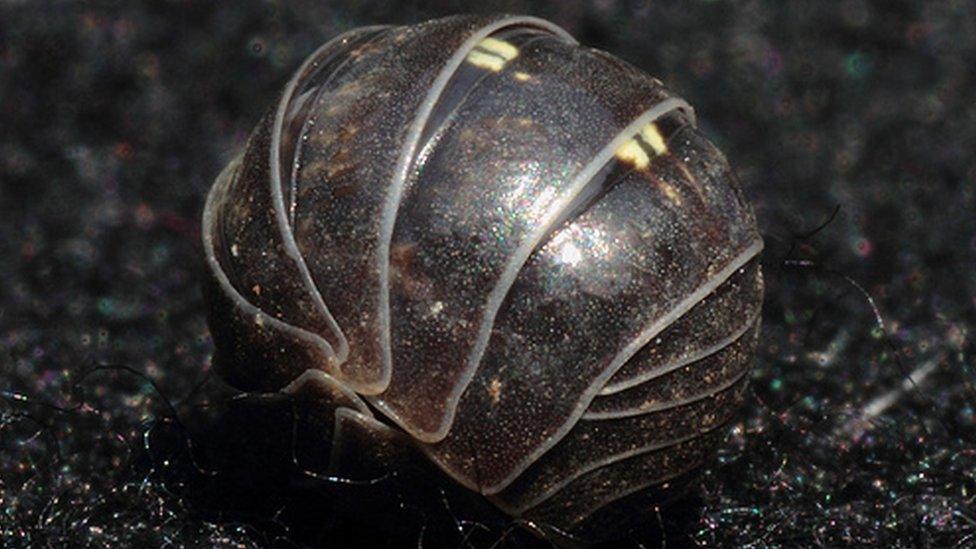Slater or chucky pig? Survey charts different names for woodlice
- Published

Is this a woodlouse? Or a slater? A chiggy wig, granny grunter, or chucky pig?
Many people in Scotland would call it a slater, or maybe a woodlouse.
It is a tiny land-dwelling crustacean, with a segmented flattened body and seven pairs of jointed legs.
Researchers have been carrying out a survey, external of the regional variations in names for the garden-dwelling creature.
And they have already recorded 250 different names.
Granny grey, cheesy bob and chucky pig are among some of the titles it is given.
In Welsh it is known as a mochyn coed, which means wood pig.
Dr Warren Maguire, a lecturer in Linguistics and English Language at the University of Edinburgh, is carrying out the survey along with other researchers.
He told BBC Radio Orkney: "There are creatures that have different names, so snails and centipedes and dragonflies have different names in Scots and dialects of English and so on.
"But, for some reason, woodlice have got the most regional names.
"They've got hundreds of names. And no other life form seems to have anything like that."

What do you call them?

The survey has already recorded 250 names including:
Billy Baker
Monkey pea
Grammer zow
Parson's pig
Chiggy wig
Cheese log
Daddy granfer
Granny grunter
Damper
Slate cutter
Hardy back
Penny sow
Cheesy bug
Nut bug

Dr Maguire says there are a further 100 names which have been noted for woodlice in the past and he and the other researchers are now keen to confirm if any of them are still in use.
He has his own theory about why there might be such a variety of terms.
"If you think about who amongst us are closest to these things that crawl around on the ground, it's going to be children who find them under stones and under sticks," he said.

Some of the creatures can roll up into a ball when disturbed, as a defensive measure
Dr Maguire spoke to BBC Radio Orkney in a bid to encourage people on the islands to take part in the survey and get in touch with their names for woodlice.
He said there seemed to be more variations in the names in southern Britain.
"One of the reasons we think that might be is that in southern Britain especially they have the sort that roll up into little balls when you touch them.
"And I know from my own kids' experience that children find these very fascinating."
The survey asks people where they were brought up, where they live now, and the names they use for the creatures.
The academics say there is a great deal of public interest in the subject, but the variety of names has never been properly recorded before and they are hoping to change that.